One reason I became a literary critic is that the discipline seemed like a good arena for intellectual synthesis. Moreover, I had the example of Richard Macksey [1], who had a broad and wide-ranging intelligence that he brought to bear on literature.
It was thus with some distress that I read an article in nature that indicated that literary criticism was, in comparison with other disciplines, quite insular [2]. The study was published in Nature, which is of course a science journal, and the raw citation data came from the Thomson Reuters Web of Science [3]: “The analysis shown here used journal names to assign more than 35 million papers in the Web of Science to 14 major conventional disciplines (such as biology or physics) and 143 specialties.” The Web of Science includes journals listed in Arts & Humanities Citation Index® and Current Contents®, Arts & Humanities. I don’t know this world well enough to have a serious opinion about how complete those lists are, but I did poking around in the journal lists and found the half dozen or so journals I searched for (PMLA, Critical Inquiry, Style, MLN, NLH, & one or two others), but it wasn’t easy to get a quick take on what was there. I’d guess 100s to maybe a 1000+ of literary journals.
The study has a number of aspects, one of which is citation practices: How often does a discipline cite articles outside the discipline? How often are articles in a discipline cited by articles outside the discipline? This is depicted in an interactive graph that shows all 143 specialties from 1950 to 2014. Literature doesn’t even show up as an independent specialty until 1975.
This chart shows all specialties for 1975. Humanities disciplines are light blue; the red arrow points to literature:
The horizontal axis runs, left to right, from few citations going outside the home discipline to many citations going outside the home discipline. Articles in those disciplines left of center, such as literature, are citing more sources within the discipline than outside it. The vertical axis runs, bottom to top, from a low percentage of citations coming from outside the discipline to many citations coming from outside the discipline. Articles in those disciplines below the center, such as literature, thus receive fewer of their citations from outside the discipline.
This chart shows 1975, but only with humanities disciplines. Again, the red arrow points at literature:
This chart shows 1985, humanities only, red arrow at literature:
1995, humanities only, red arrow on literature:
2005, humanities only, red arrow on literature:
2013, humanities only, red arrow on literature:
Note: I chose 2013, rather than the final year, 2014, because the 2014 chart had some explanatory material on it that’s irrelevant to literature.
2013, all disciplines, red arrow on literature:
If you compare the charts for all disciplines in 1975 and 2013 you can see there seems to be a trend toward more interdisciplinary work. Literature does move around a bit, but it never leaves the lower left quadrant and in 1985 and 2013 it is unambiguously the least interdisciplinary of the humanities disciplines.
Basically, I don’t know what’s going on. It’s not what I would have expected of a discipline that, in one reading, has taken over the synthesizing role once taken by philosophy. Moreover, if you go to the interactive chart online you’ll see that philosophy is more interdisciplinary than literature in every year except 1975, and that year’s ambiguous (literature cites outside more often than philosophy, but philosophy received more outside cites).
Is the synoptic nature of literary criticism a function of the texts we study, and the scope of phenomena they present, rather than of how we think? If so, are we in danger of mistaking the imitation, the text, for the real, the world? Though if you really want to go full-Plato, then we’re mistaking the imitation (text) of the imitation (world) for the real (ideals).
Addendum: 3:05 PM, Jan. 25, 2017: I have a few comments the bear on interpreting the above charts.
1). Books are a more important component of intellectual production in literary criticism (and the humanities generally) than they are in the sciences. Assessing the interdisciplinary reach of the journal literature thus may not be an adequate way to assess the discipline.
2). Literary critics working in, for example, cognitive criticism or evolutionary criticism, will necessarily cite those psychological disciplines, but investigators in those disciplines may not have much reason for reciprocal citation. As an analogy, consider a cathedral. Someone designing and constructing a cathedral (literary criticism) needs to know about the materials and construction methods used. But someone who is expert in say, glass-making, carpentry, masonry (various psychological disciplines), need not know much about cathedral design.
3.) There is little reason for a literary critic engaging in standard issue “close reading” to cite anything other than literary criticism. And who but other critics would be interested in those close readings? A historian interested in attitudes and beliefs might be interested, sociologists perhaps. Otherwise, not so much.
References
[1] Greg Rizzi, Honor for Dr. Humanities, The Johns Hopkins Gazette, Vol. 28. No. 38, June 21, 1999, URL: http://pages.jh.edu/~gazette/1999/jun2199/21macsey.html
Hent dr Vries, A Vocation for the Humanities: Honoring Richard Macksey, MLN, Vol. 125, 2010, 1003-1009, URL: http://muse.jhu.edu/article/426804 (paywall)
[2] Richard Van Noorden, Interdisciplinary research by the numbers, Nature, Vol 535, issue 7569, 16 September 2015, 306-307, URL: http://www.nature.com/news/interdisciplinary-research-by-the-numbers-1.18349
[3] URL: http://wokinfo.com
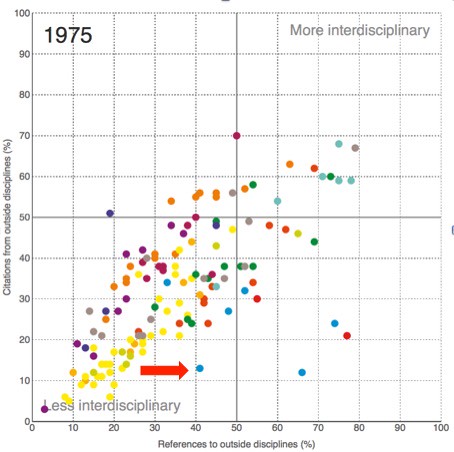
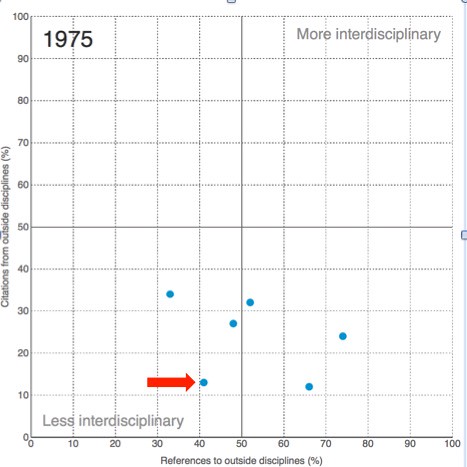
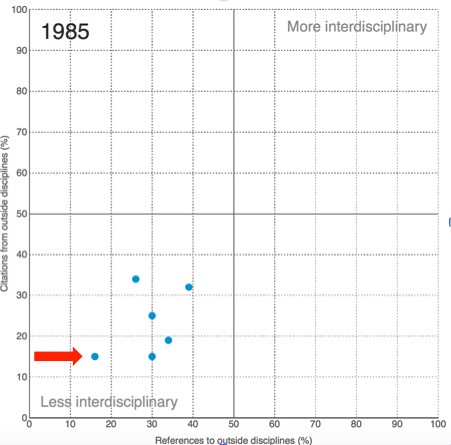
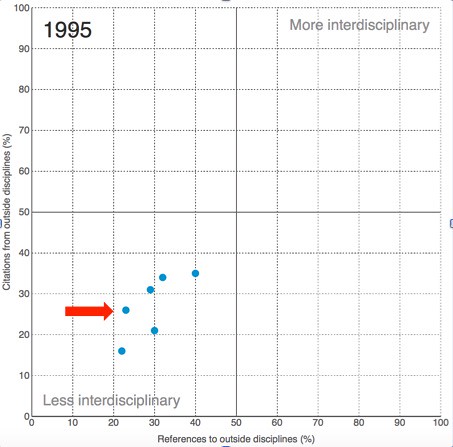
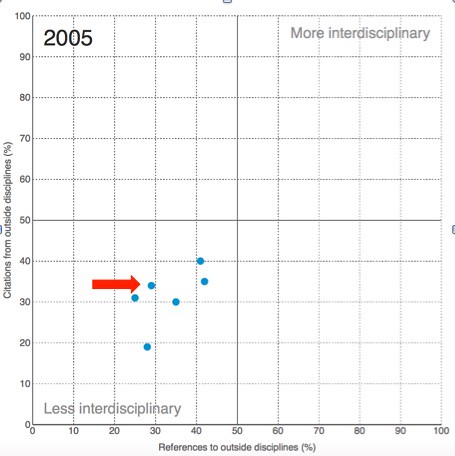
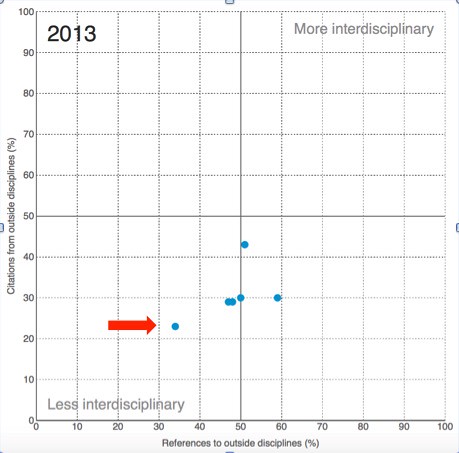
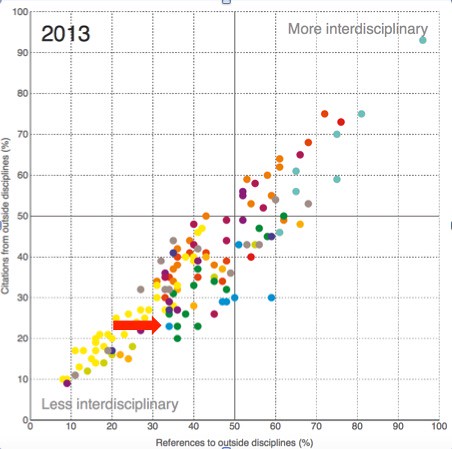
No comments:
Post a Comment